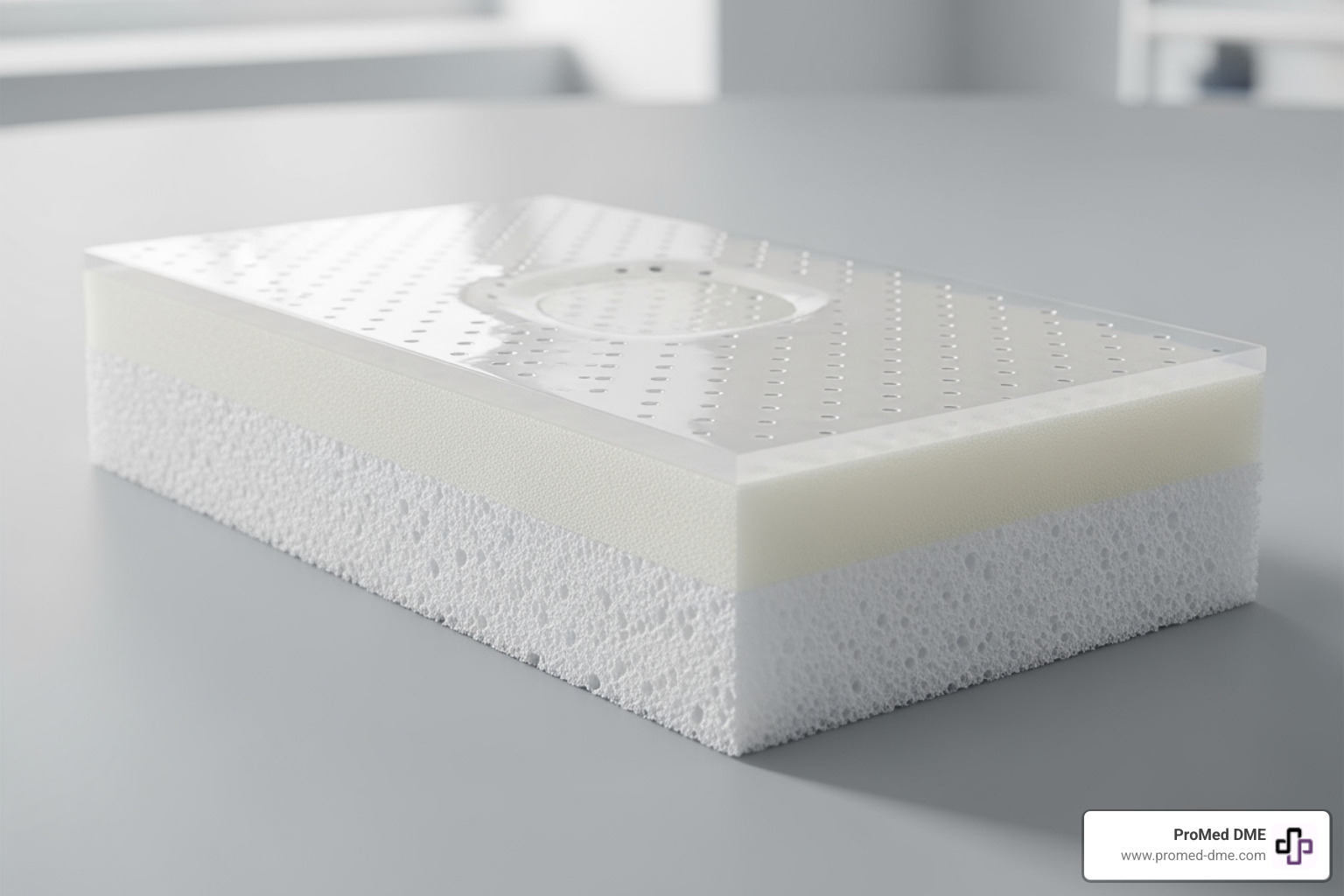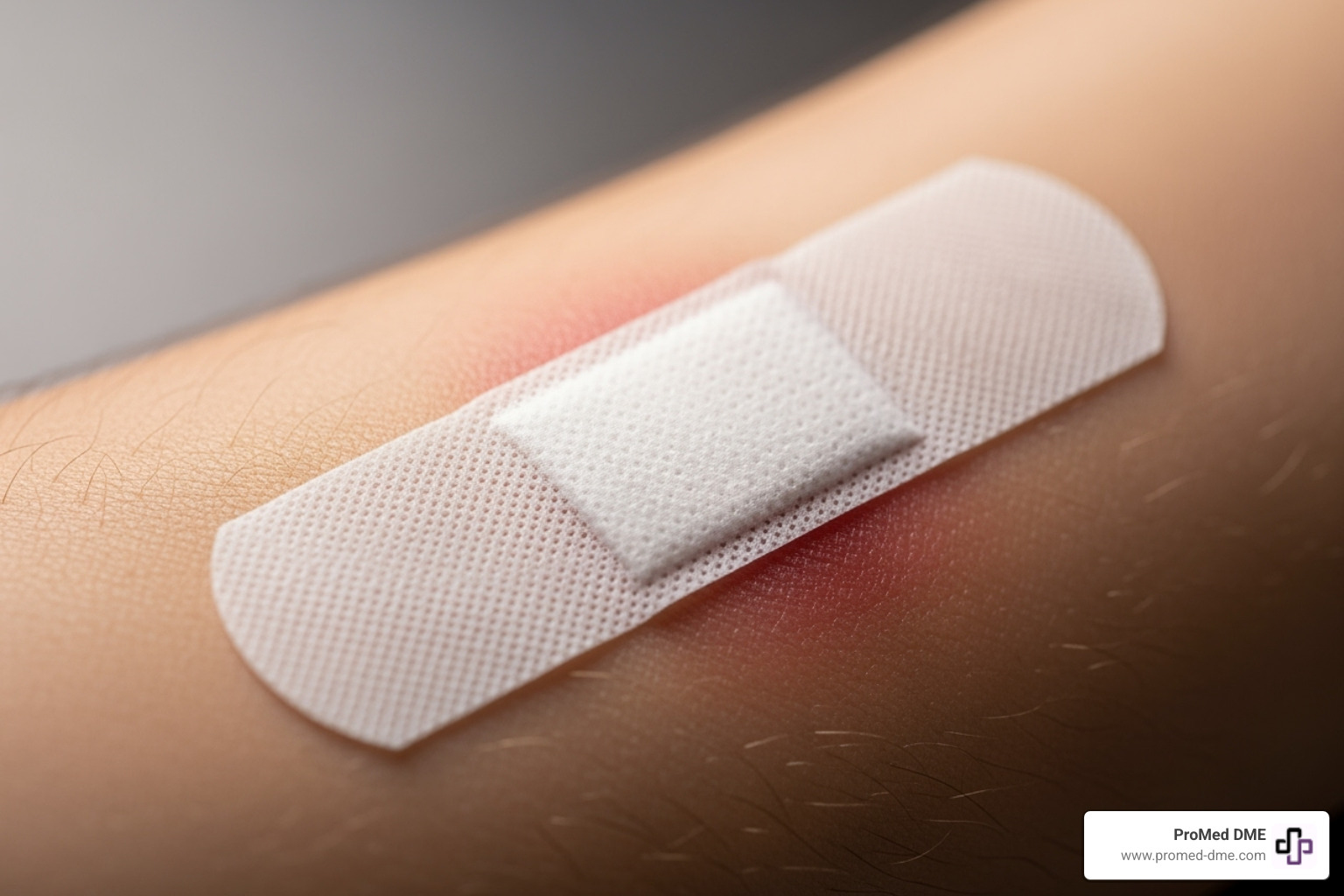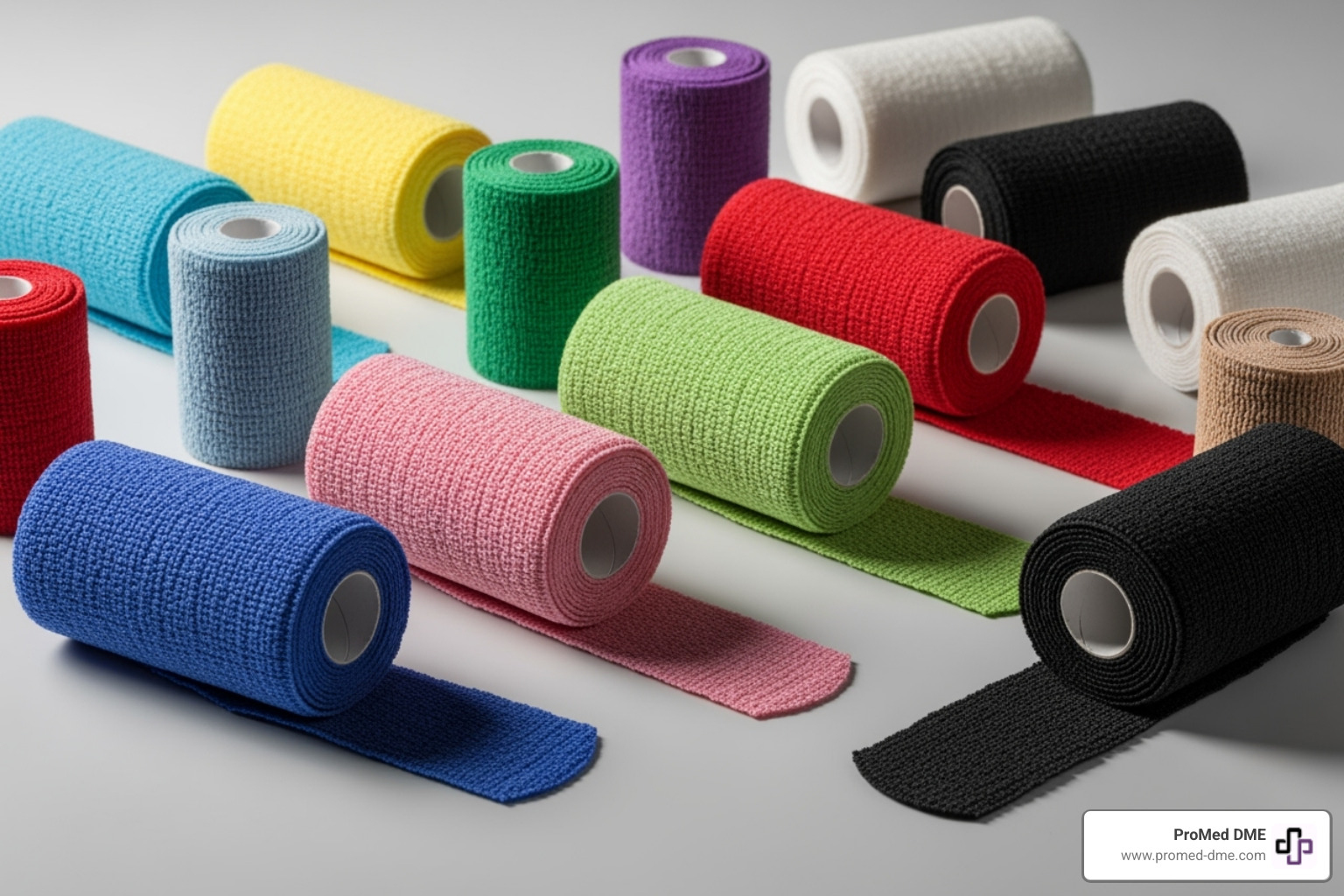The Sterile Truth About Burn Care: What You Need to Know
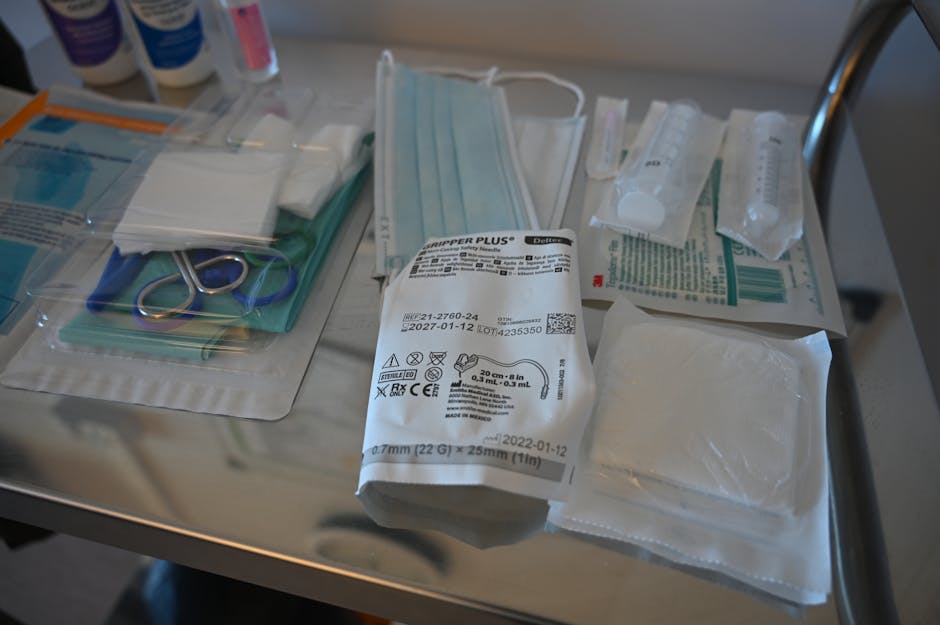
Why Proper Burn Care Starts with the Right Dressing
A burn sterile dressing is your first line of defense when treating burn injuries. When you're dealing with a burn, the right sterile dressing can mean the difference between quick healing and serious complications.
Quick Guide to Choosing Sterile Burn Dressings:
- Hydrogel dressings - Best for dry burns, sunburns, and pain relief with cooling effect
- Foam dressings - Ideal for burns with moderate drainage, cushions and protects
- Alginate dressings - Perfect for heavily draining wounds, highly absorbent
- Size matters - Choose dressings that extend beyond burn edges
- Look for non-adherent - Prevents painful removal and tissue damage
- Always sterile - Reduces infection risk in vulnerable burn wounds
Burns create an open pathway for bacteria and other harmful microorganisms to enter your body. Without proper sterile protection, even minor burns can lead to serious infections.
The research shows that sterile burn dressings like Burnshield can "absorb and dissipate heat, provide relief, minimize shock and skin damage, halt the burn process, and physically protect against further contamination." This immediate protection is crucial because burn wounds are particularly vulnerable to infection.
The key is acting fast with the right sterile dressing. Whether you're dealing with a kitchen accident, sunburn, or workplace injury, having the proper sterile burn dressing on hand can prevent complications and speed healing.
For those managing chronic conditions or keeping well-stocked first aid supplies, understanding which sterile dressing works best for different burn types can save you time, money, and unnecessary pain.
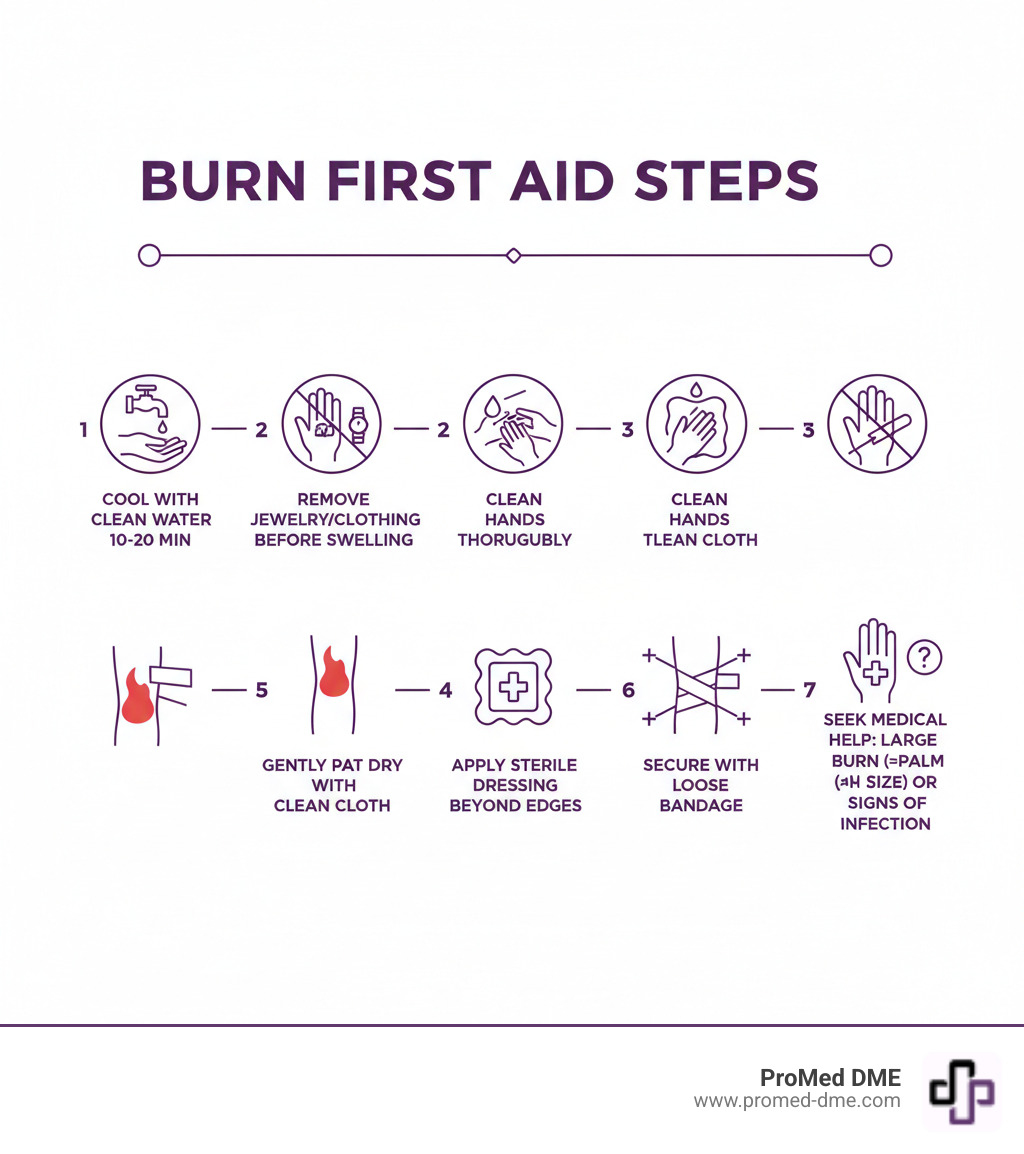
Why Sterility is the First Step in Burn Healing
When you get burned, your skin's protective barrier gets damaged - think of it like a castle wall with a big hole in it. That opening makes your body incredibly vulnerable to infection, and this is exactly why using a burn sterile dressing isn't just helpful, it's absolutely essential.
Your burned skin becomes a prime target for bacteria and other nasty microorganisms looking for a way into your body. Without proper protection, these unwelcome visitors can set up shop in your wound and cause serious problems. A sterile dressing acts as your personal bodyguard, creating a pathogen barrier that keeps the bad stuff out while your skin works on healing itself.
But sterile dressings do more than just block bacteria. They help create the perfect healing environment by maintaining the right moisture level around your wound. According to a review on wound healing, this moist environment is crucial for your body's natural healing processes. It helps manage wound drainage, prevents your skin from getting too soggy, and even supports your body's ability to naturally clean away dead tissue.
The bonus? When your wound heals in this protected, controlled environment, you're likely to see less scarring and better-looking skin once everything's healed up.
The Dangers of a Non-Sterile Environment
Using a non-sterile dressing on a burn is like trying to fix a leaky roof with a strainer - it's just not going to work. The biggest danger you're facing is bacterial contamination. Even things that look clean can be crawling with bacteria that love nothing more than an open wound to call home.
Once bacteria move into your burn, they multiply fast. This can lead to localized infections that make your wound red, swollen, and painful. In the worst cases, the infection can spread through your bloodstream, causing a life-threatening condition called sepsis.
Delayed healing is another serious problem with non-sterile environments. Instead of focusing on fixing your damaged skin, your immune system gets stuck fighting off all those uninvited bacteria. This means increased pain, more inflammation, and a much higher chance of permanent scarring.
There's also the risk of cross-contamination - spreading the infection to other parts of your body or even to family members. Nobody wants that kind of trouble.
Primary Benefits of Using Sterile Dressings
A quality burn sterile dressing does so much more than just cover your wound. It's like having a skilled medical team working around the clock to help you heal.
First, many modern sterile dressings halt the burn process immediately. They're designed to absorb and pull heat away from your skin, which stops the burning from getting worse. This cooling action can literally save your skin from deeper damage.
The cooling effect also minimizes skin damage and helps prevent shock - your body's scary response to serious injury. When that soothing coolness hits your burn, you'll feel immediate relief from the pain and heat.
As your skin starts to heal, delicate new cells begin growing to replace what was damaged. Your sterile dressing protects this new tissue growth like a protective shield, keeping it safe from bumps, bacteria, and anything else that might interfere with healing.
The combination of cooling, protection, and pain relief creates the ideal conditions for your body to do what it does best - heal itself efficiently and completely.
Types of Sterile Burn Dressings and Their Materials
Choosing the right burn sterile dressing is a bit like picking the perfect outfit for the weather – you wouldn't wear a heavy winter coat on a sunny beach day! The key is matching your dressing to your specific burn's needs, considering factors like how much the wound is draining, how deep the burn goes, and where it's located on your body.
Think of it this way: a dry, superficial sunburn needs completely different care than a kitchen burn that's weeping fluid. That's why understanding your options can make all the difference in your healing journey.
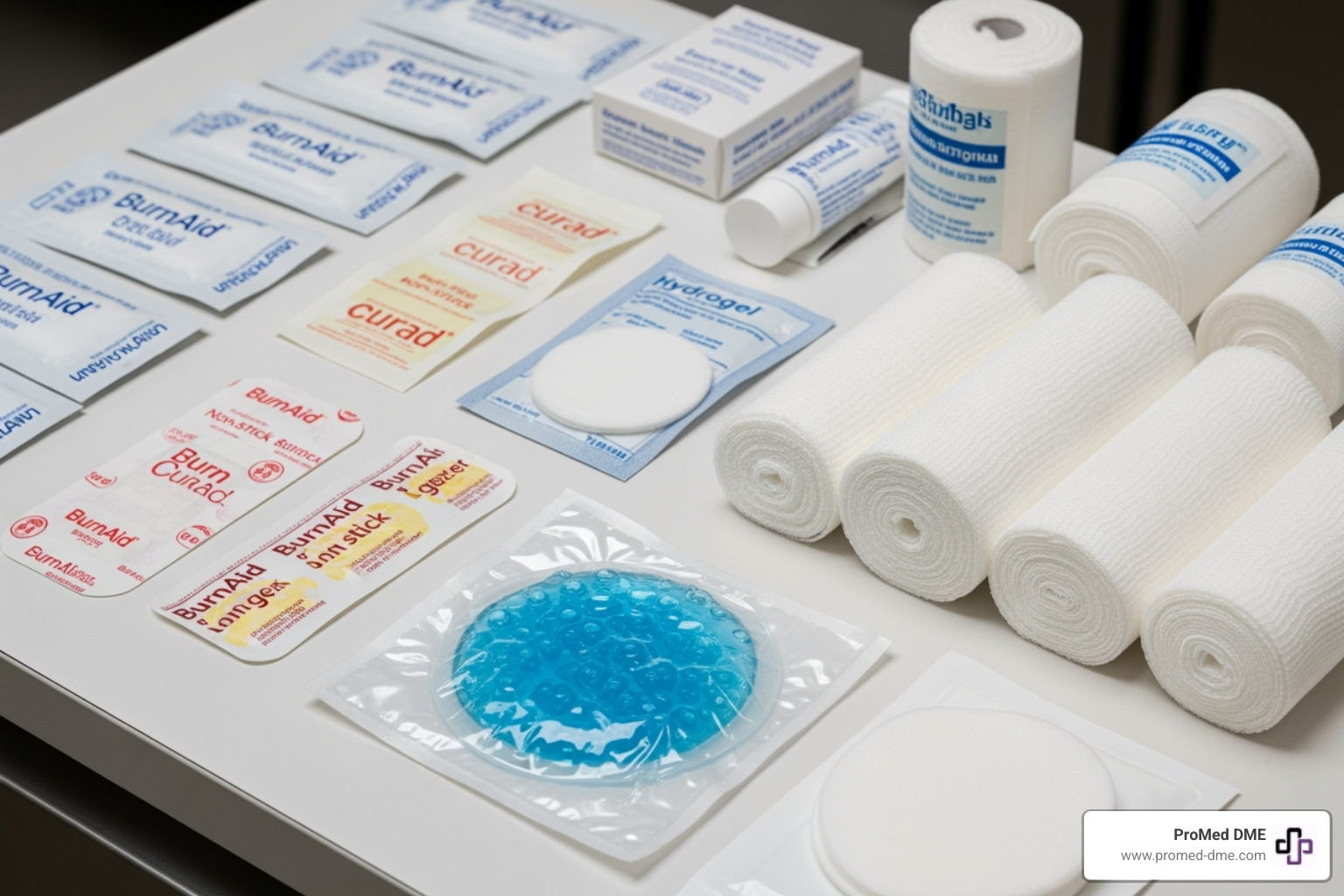
Hydrogel Dressings
If you've ever put aloe vera on a sunburn, you already understand why hydrogel dressings are so popular. These water-based gel dressings are like a cool drink of water for your burned skin – literally! Made up of 96% water in products like Burnshield, they provide that instant "ahh" feeling when applied to hot, painful burns.
The magic happens because all that water content creates an immediate cooling effect that draws heat away from your burn. Many hydrogel dressings also include soothing ingredients like aloe vera or tea-tree oil, turning your dressing into a spa treatment for injured skin.
What makes hydrogel dressings particularly gentle is their non-adherent surface. They won't stick to your delicate healing tissue, which means changing the dressing won't feel like ripping off a band-aid from hairy skin. Plus, many are water-soluble, so they rinse away cleanly without leaving any sticky residue behind.
These dressings work best for dry wounds, sunburns, and superficial burns where your skin needs moisture and cooling relief. If your burn isn't producing much drainage, hydrogel is often your best friend.
Alginate Dressings
Here's something cool – alginate dressings are made from seaweed! Before you picture yourself wrapped in kelp, know that this natural material has been refined into one of the most absorbent dressings available.
The real magic happens when alginate meets wound fluid. It transforms from a dry dressing into a soft, protective gel that molds perfectly to your wound. Think of it like those expanding sponges – but much more sophisticated and designed specifically for healing.
Alginate dressings are the heavy lifters of burn care. They can absorb impressive amounts of drainage while promoting autolytic debridement – a fancy way of saying they help your body naturally clean away dead tissue. This makes them perfect for moderate to heavily exuding burns where you need serious absorption power.
Just remember, alginate dressings need moisture to work properly. Using them on very dry burns would be like trying to activate that expanding sponge without water – not very effective.
Foam Dressings
Made from polyurethane material, foam dressings are the comfortable cushions of the wound care world. They're designed to absorb moderate to heavy drainage while providing a protective buffer between your burn and the outside world.
What sets foam dressings apart is their cushioning ability. If your burn is in a spot that gets bumped or rubbed – like over a joint or bony area – foam dressings act like a protective pillow. They're also flexible enough to move with your body, so you won't feel restricted.
You'll find foam dressings in both adhesive and non-adhesive forms. The adhesive versions stick gently around the wound edges, while non-adhesive ones need a secondary bandage to stay in place. They also work well under compression if your healthcare provider recommends that approach.
Comparing Hydrogel, Alginate, and Foam Dressings
| Dressing Type | Best For (Burn Type/Exudate Level) | Key Benefit | Application Note |
|---|---|---|---|
| Hydrogel | Dry burns, sunburns, superficial/partial thickness burns, pain relief | Cooling, pain relief, rehydration, non-adherent | Often contains aloe or tea-tree oil; water-soluble for easy removal. |
| Alginate | Moderate to heavily exuding burns, partial-thickness burns | High absorbency, promotes autolytic debridement, forms protective gel | Not for dry wounds; requires secondary dressing to secure. |
| Foam | Moderate to heavily exuding burns, partial-thickness burns | High absorbency, cushioning, protection from trauma | Can be adhesive or non-adhesive; good under compression. |
The bottom line? Your burn sterile dressing choice should match what your wound needs most – whether that's cooling relief, heavy-duty absorption, or gentle cushioning protection.
How to Choose and Apply a Burn Sterile Dressing
Selecting and applying a burn sterile dressing correctly is as important as the dressing itself. It's not just about slapping something on; it's about understanding the wound and using the right technique to maximize healing and minimize complications.

Key Features of an Effective Burn Sterile Dressing
When we're looking for a top-quality burn sterile dressing, we prioritize several key features to ensure optimal care:
- Sterile Packaging: This is non-negotiable. The dressing must be individually sealed in sterile packaging to prevent contamination before use. Always check that the package is intact and hasn't been compromised.
- Non-Adherent Surface: We want a dressing that won't stick to the wound. This prevents painful removal and avoids tearing away newly formed, delicate tissue, which can delay healing and increase scarring. Burnshield, for example, is specifically designed to be non-adhesive and easy to remove without further trauma.
- Water-Soluble (for hydrogels): For hydrogel dressings, water-solubility is a huge plus. It means the gel can be easily rinsed away with water, allowing for clear wound assessment and gentle debridement without leaving residue.
- Appropriate Size and Shape: The dressing should be large enough to cover the entire burn wound and extend beyond its edges by at least an inch to provide an adequate protective margin. Many brands offer various sizes, and some even provide specialized shapes like facial masks or hand dressings for tricky areas.
- Flexible and Conformable: Burns often occur on curved or jointed areas of the body. A good dressing should be flexible enough to conform to these contours without gapping, ensuring consistent contact with the wound bed. Burnshield dressings boast excellent tensile strength, allowing them to be pulled and shaped, or even ripped to conform to tricky wounds.
- Durability: While flexible, the dressing should also be durable enough to withstand normal movement and provide sustained protection between changes.
Matching the Dressing to the Burn
The type of burn you're dealing with will heavily influence your choice of burn sterile dressing:
- Thermal Burns: These are the most common type, caused by heat (flames, hot liquids, hot objects). Hydrogel dressings are often excellent for initial treatment due to their cooling and pain-relieving properties, especially for superficial and partial-thickness thermal burns.
- Chemical Burns: Caused by strong acids or bases. After thoroughly irrigating the burn area to remove the chemical, a sterile dressing, often a hydrogel, can provide soothing relief and protection. However, chemical burns often require immediate medical attention due to their potential for ongoing tissue damage.
- Electrical Burns: Caused by electrical current. While the external burn might look small, electrical burns can cause significant internal damage. After ensuring the power source is off and contacting emergency services, a sterile dressing can be applied to the external wound. These burns always require immediate medical evaluation.
- Sunburns: For severe sunburns (which are essentially first or superficial second-degree burns), hydrogel dressings with aloe are particularly soothing and help rehydrate the skin, promoting healing and reducing discomfort. Burnshield is even highlighted as "Great for Sunburns."
For superficial burns (first-degree, like most sunburns) and superficial partial-thickness burns (second-degree, with blisters), non-adherent hydrogel or foam dressings are generally suitable. Deeper or more extensive burns, or any burn involving the face, hands, feet, genitals, or major joints, always require immediate professional medical attention. Topical agents like silver-containing dressings are often used for deeper burns, but these are typically applied by healthcare professionals.
Step-by-Step: Applying a Burn Sterile Dressing
Applying a burn sterile dressing might seem daunting, but with a clear process, you can do it effectively. For anything more than a minor burn, or if you're unsure, seek medical help.

Here's how we recommend applying a burn sterile dressing to a minor burn wound:
- Wash Your Hands Thoroughly: This is the absolute first step. Wash your hands with soap and water for at least 20 seconds to prevent introducing new bacteria to the wound. You might even consider wearing sterile gloves if available.
- Gently Cool the Burn: If the burn is fresh, immediately cool it with cool (not ice cold) running water for 10-20 minutes. This helps stop the burning process and provides pain relief.
- Gently Clean the Wound: If the burn is not fresh, or after cooling, gently clean the burn area with mild soap and water or saline solution. Pat the area dry with a clean, soft cloth or sterile gauze. Avoid harsh scrubbing or using antiseptic solutions like Betadine excessively, as they can sometimes damage new tissue, as noted in guidance on modern wound care.
- Open the Sterile Packaging: Carefully open the sterile dressing package, touching only the edges of the dressing or the outside of the protective liner. Avoid touching the part of the dressing that will come into contact with the wound.
- Apply the Dressing: Place the burn sterile dressing directly over the burn wound, ensuring it covers the entire affected area and extends slightly beyond the edges. For hydrogel dressings, the gel side should be in contact with the wound.
- Secure with a Bandage: If the sterile dressing is non-adhesive, you'll need to secure it in place with a clean, non-adherent roller bandage or medical tape. Wrap the bandage firmly but not too tightly, ensuring it doesn't restrict blood flow. Check for signs of tightness like numbness, tingling, or increased pain.
- Monitor the Wound: After application, keep an eye on the dressing and the surrounding skin for any signs of discomfort or complications.
Frequently Asked Questions about Sterile Burn Dressings
When you're dealing with burn care, it's completely natural to have questions. After all, proper wound care can feel overwhelming when you're trying to do everything right. Let's walk through some of the most common concerns people have about using a burn sterile dressing so you can feel more confident in your care routine.
How often should I change a burn dressing?
This is probably the question we hear most often, and it's a great one to ask! For most minor to moderate burns that you're managing at home, you'll want to change your burn sterile dressing daily. Think of it like changing the sheets on your bed – fresh is better for healing.
The daily change routine serves multiple purposes. It keeps the wound clean, lets you check how the healing is progressing, and prevents bacteria from setting up camp in your dressing. You'll know it's definitely time for a change when the dressing becomes saturated with drainage, looks dirty, or starts peeling away from your skin.
Here's a helpful tip: if your dressing is sticking when you try to remove it, don't force it! Just moisten it with a few drops of warm water to loosen it gently. This prevents tearing away new tissue that's trying to heal.
Watch for these signs that mean "change me now": unusual odor from the dressing, any color change in the drainage, or if the dressing feels soggy or loose. Always follow any specific instructions your healthcare provider gives you, as some situations might need more frequent changes.
How should I store burn dressings?
Proper storage is like keeping your emergency supplies in good condition – you want them ready when you need them. Keep your burn sterile dressing supplies in a cool, dry place away from direct sunlight and temperature extremes. Your linen closet or a dedicated first aid cabinet works perfectly.
The golden rule is to leave everything in its original sterile packaging until you're ready to use it. Those packages are specifically designed to keep everything sterile and safe. Some dressings come in special airtight poly bags that maintain sterility until you open them.
Don't forget to check expiration dates! Yes, medical supplies do expire, and using an expired dressing could compromise its effectiveness or sterility. Make it a habit to rotate your supplies, using older items first and replacing them before they expire.
What are the signs of infection I should watch for?
Knowing when something isn't healing properly can literally be a lifesaver. Your body usually gives you clear signals when an infection is trying to take hold, and recognizing these early can prevent serious complications.
The most obvious warning signs include increased redness or swelling around the burn area, especially if it's spreading beyond the original wound edges. If you notice a foul odor coming from the wound or the dressing when you change it, that's your body's way of waving a red flag.
Pay attention to any discharge changes too. Thick, green, yellow, or cloudy drainage is not normal and suggests bacterial growth. The amount of drainage might also increase significantly if an infection is developing.
Pain that gets worse instead of better is another important signal. While some discomfort is normal during healing, pain that intensifies or becomes more severe despite pain medication needs attention.
Fever is the big one – especially if it's over 102°F (38.9°C) and lasts more than two days. This can indicate that the infection is spreading beyond just the wound site.
If you notice any of these signs, don't wait to see if they'll go away on their own. Contact your healthcare provider right away. Guidance on modern wound care consistently emphasizes that early intervention is key to preventing infections from becoming serious complications.
You know your body better than anyone. If something feels "off" about how your burn is healing, trust your instincts and seek professional advice.
Conclusion
When it comes to burn care, having the right knowledge can turn a scary situation into something manageable. Throughout this guide, we've seen how a burn sterile dressing serves as your first and most important defense against complications that could derail the healing process.
The science is clear: sterility isn't just nice to have – it's absolutely essential. Burns leave your skin vulnerable, creating an open invitation for bacteria and other harmful organisms. Without proper sterile protection, even a minor kitchen accident can spiral into a serious infection that delays healing and increases scarring.
Choosing the right dressing makes all the difference. Whether you need the cooling relief of a hydrogel dressing for that painful sunburn, the high absorbency of an alginate for a more serious burn, or the cushioning protection of a foam dressing, matching the dressing to your specific burn type sets you up for success. Hydrogels excel at pain relief and cooling, alginates handle heavy drainage like champions, and foam dressings provide that extra cushioning protection your healing skin needs.
Proper application is just as crucial as the dressing itself. Taking time to wash your hands, gently clean the wound, and apply the sterile dressing correctly – while watching for those warning signs of infection like increased redness, foul odor, or worsening pain – can mean the difference between smooth healing and serious complications.
At ProMed DME, we understand that dealing with burns and wound care can feel overwhelming. That's why we're committed to providing not just top-quality medical supplies, but also the guidance and support you need to heal confidently. Our team, including our dedicated nurse on staff, is here to help you steer your wound care journey with products you can trust.
For all your wound care needs, from sterile dressings to aftercare supplies, explore our comprehensive product range. We make it easy with free shipping across the United States and work with most insurance plans to keep your out-of-pocket costs minimal.
Related Resources & Articles
Stay informed with our informative blog posts.
Discover the ProMed Advantage
& Try Our Products
We offer free shipping and legendary customer service to ensure you receive the
best DME products for your needs.

